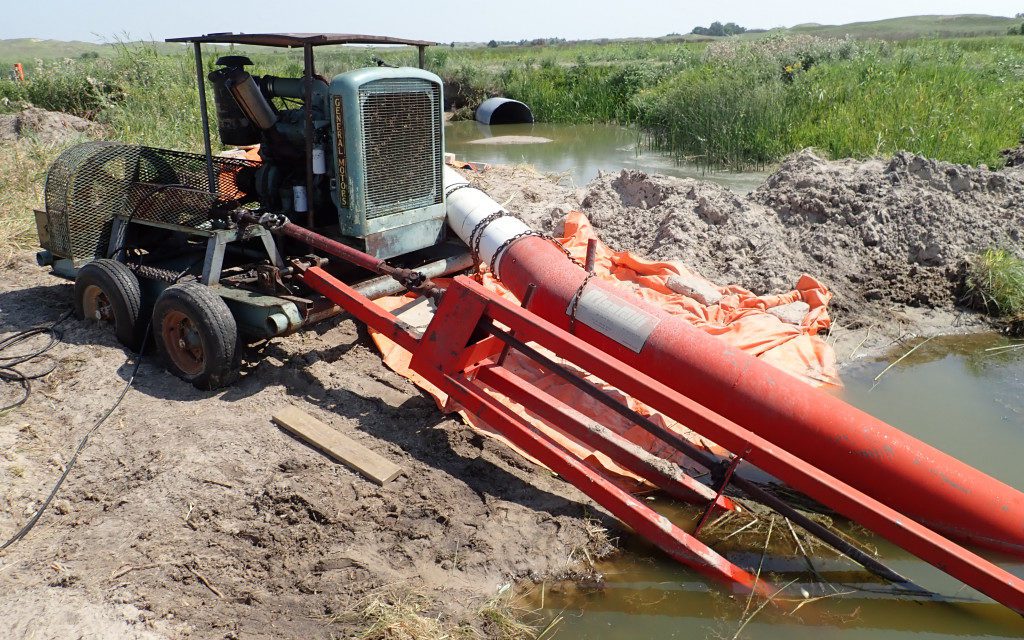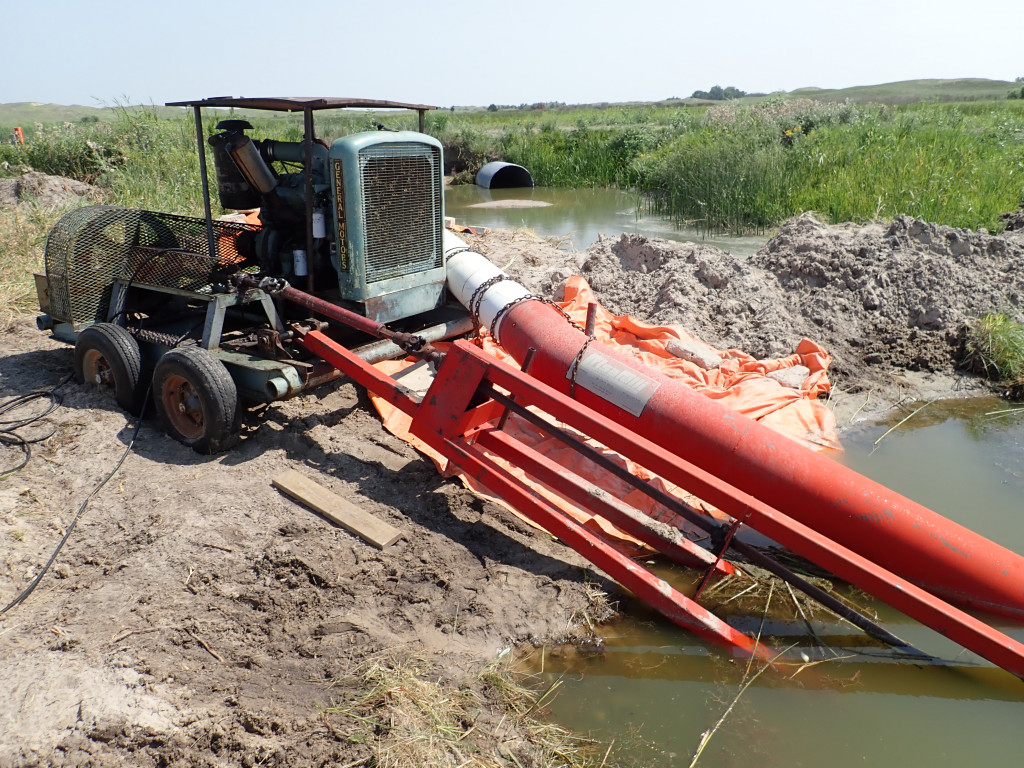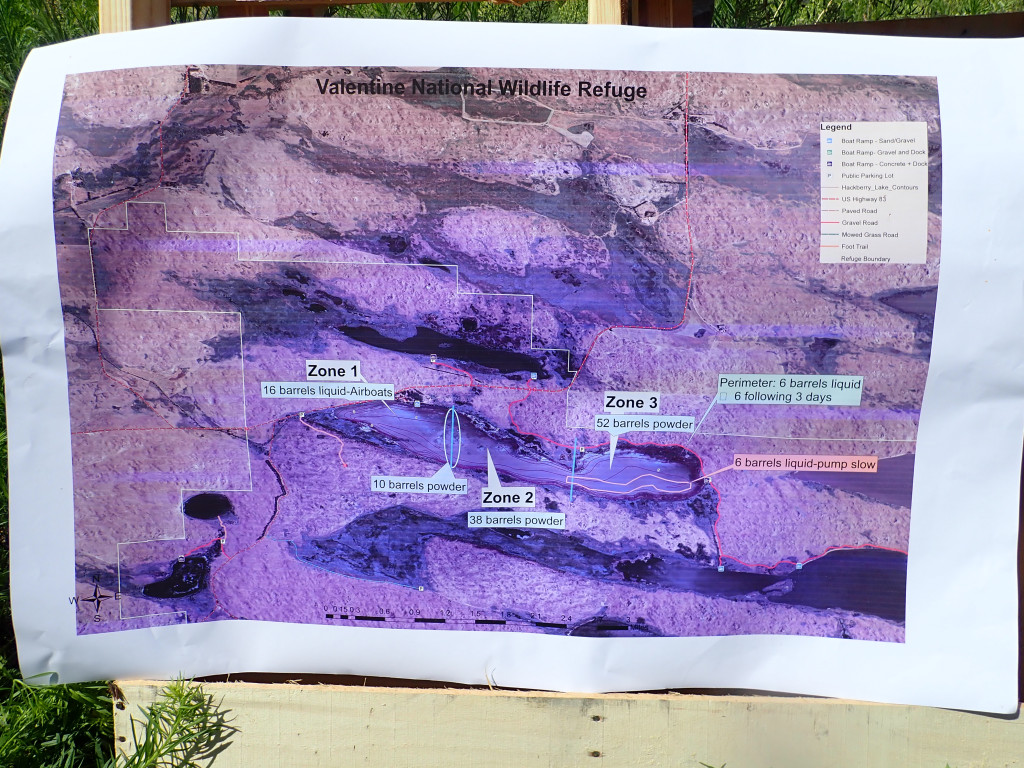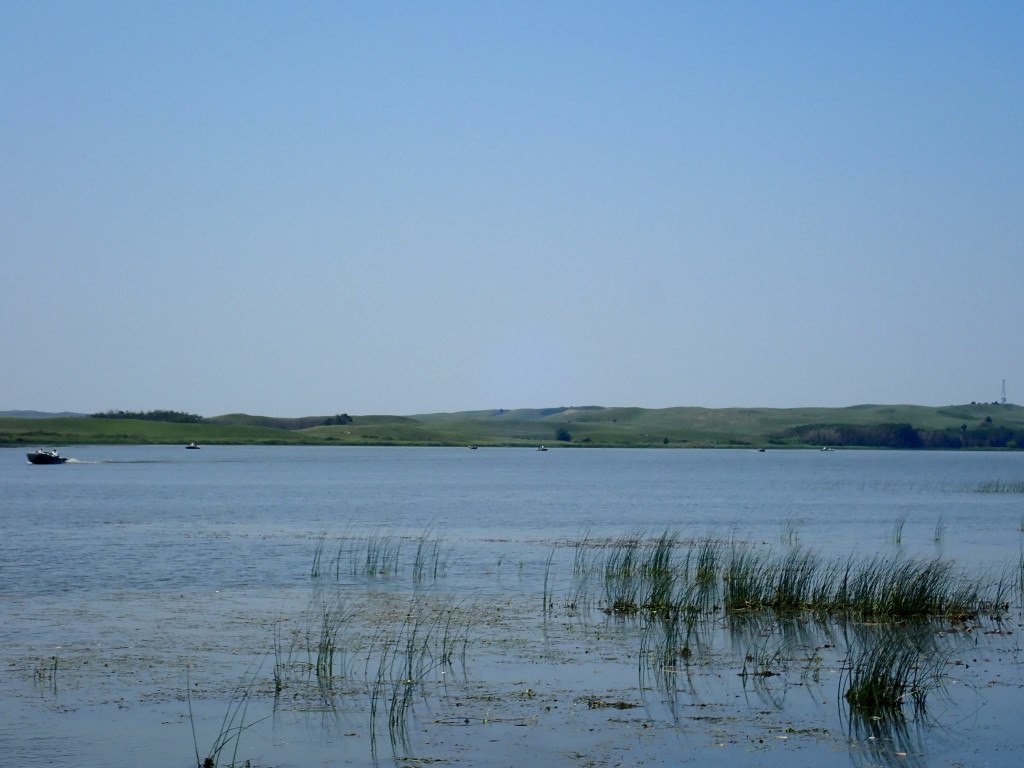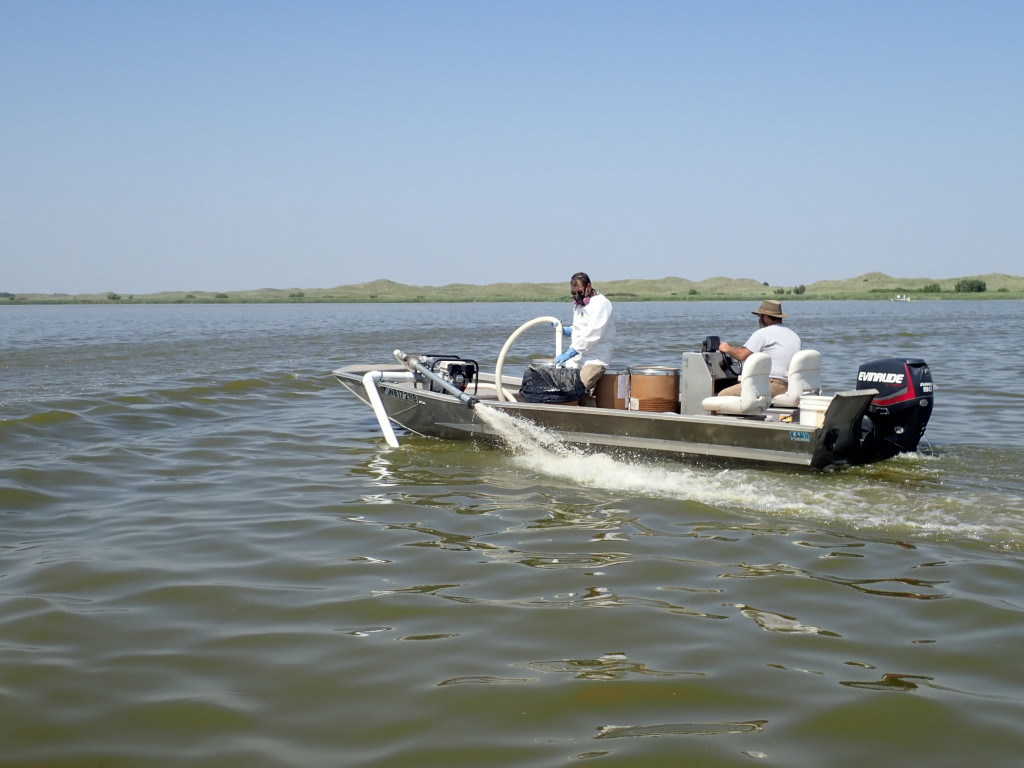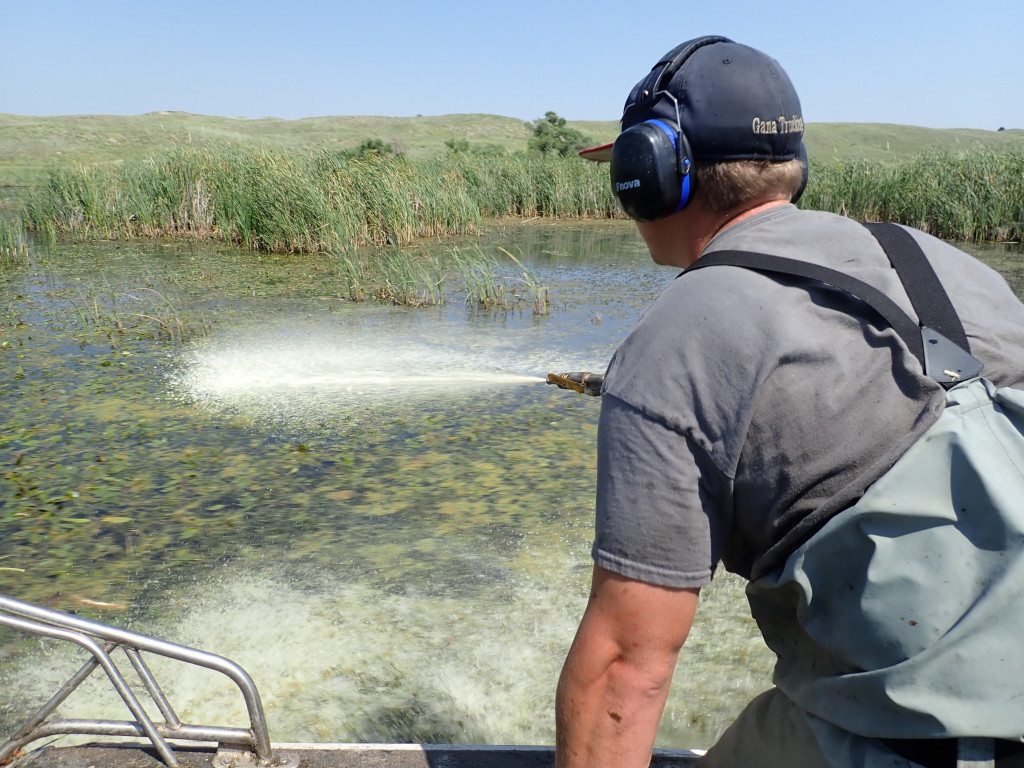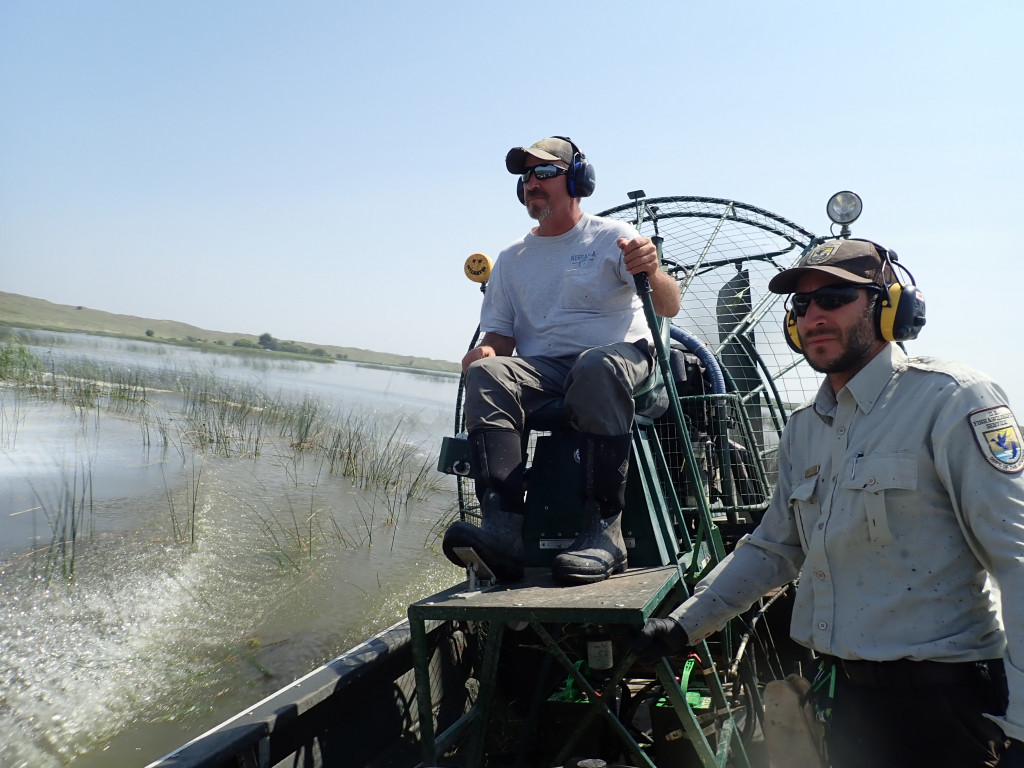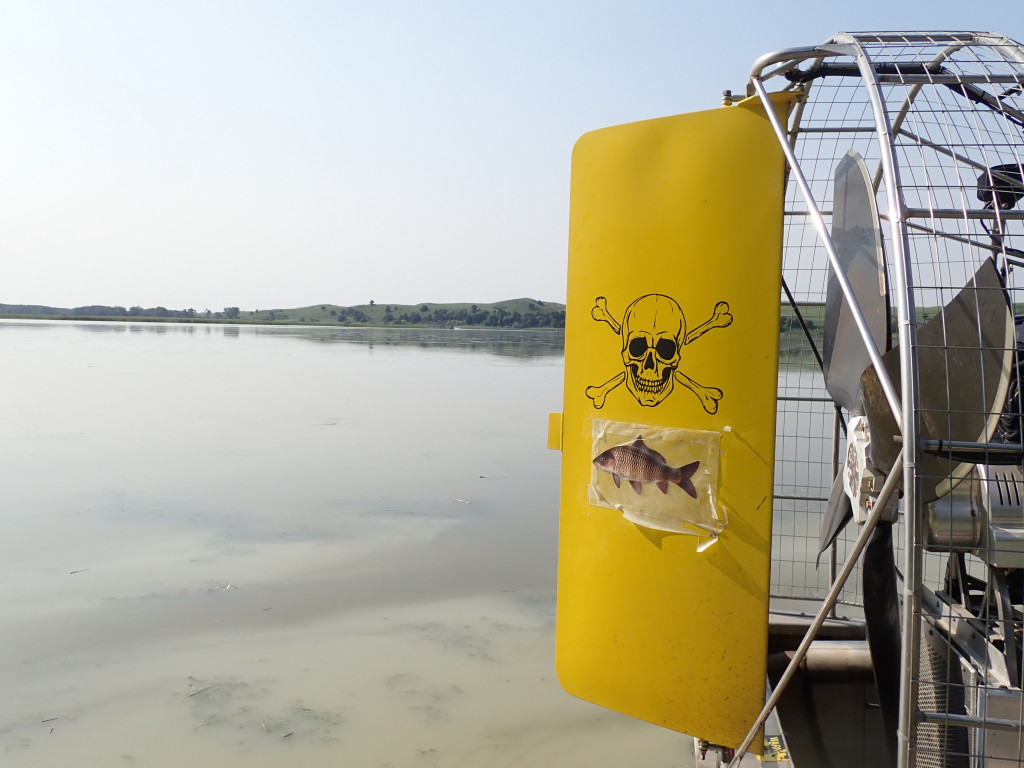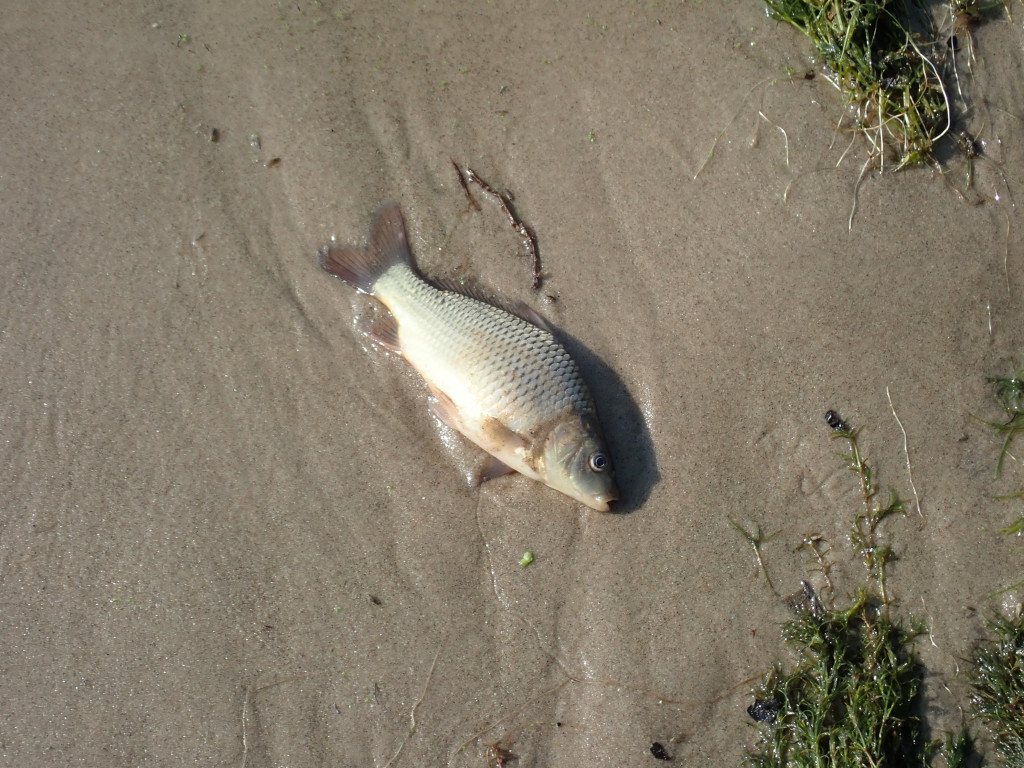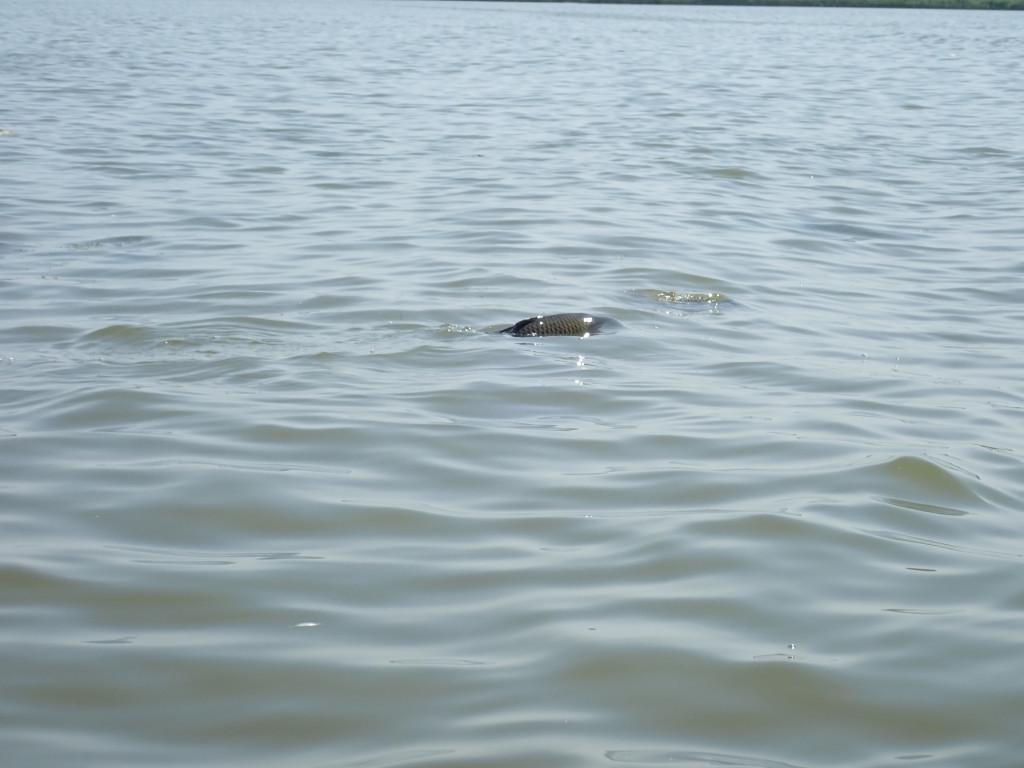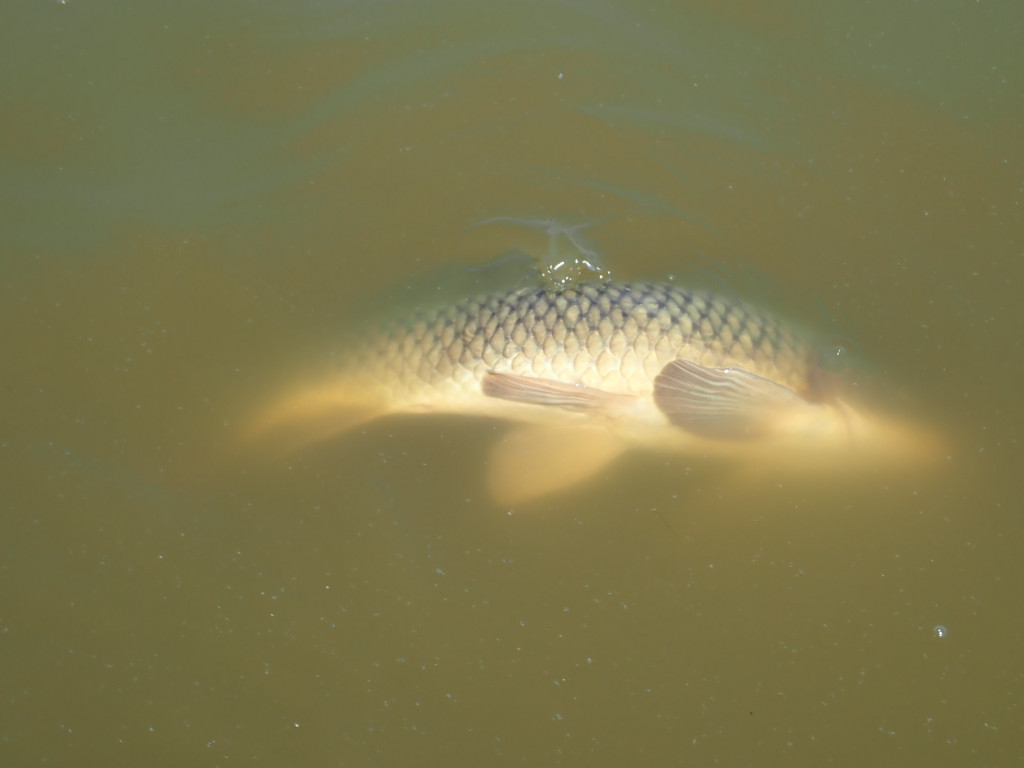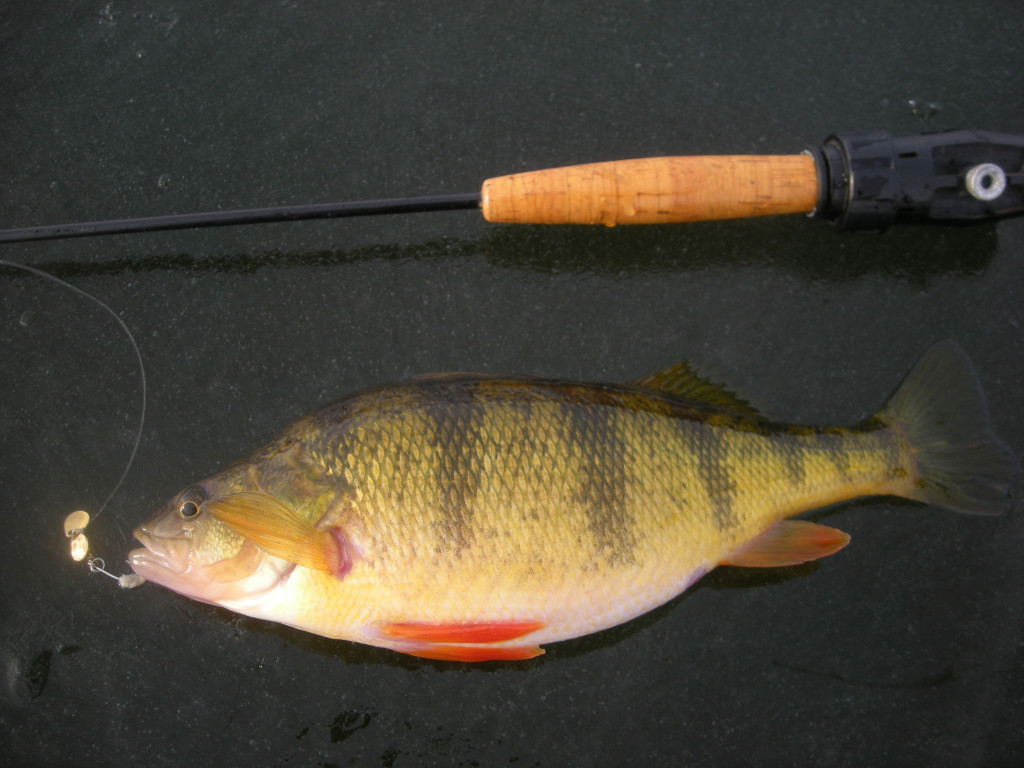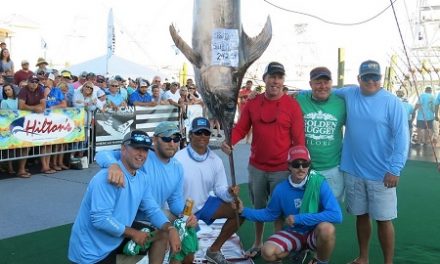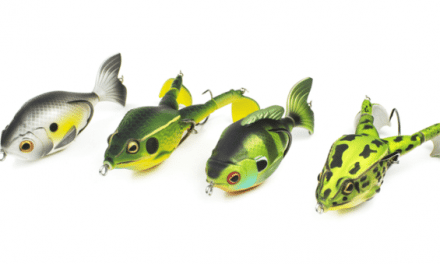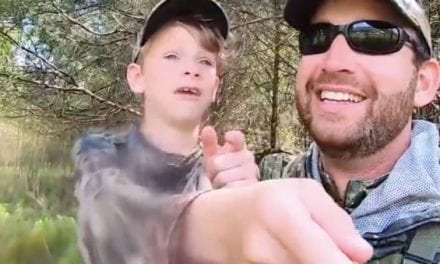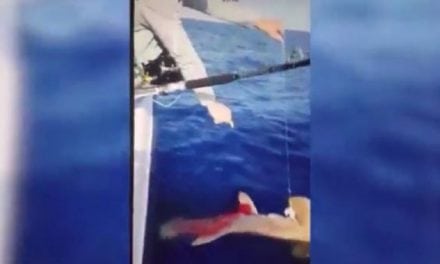Several of you have asked about last week’s renovation project at Hackberry Lake on the Valentine National Wildlife Refuge. I was there, helped a little bit, took some pictures. . . .
First of all, some context: If you are not aware of the work being done on the Valentine Refuge, it has been cussed and discussed over and over. Please go back and read this, Valentine National Wildlife Refuge (NWR) Update. If you are unfamiliar with rotenone renovations in general, Renovations.
Hackberry is the second lake in the current round of renovations on the Valentine NWR. We had planned to renovate Hackberry a couple of years ago, but the ‘hills have been wet, very wet. We waited until now when water levels were a bit lower. Less water means less rotenone is needed, less expensive. Less water also means a more effective renovation. Pumping lowered the water even more:
Now that was a pump!
A project like this is a big one. It takes some planning:
Powdered rotenone is much less expensive, so we use as much of that as possible. It is mixed and dispersed near the surface. Liquid rotenone is needed for spraying shallow areas, or pumping into deeper water,
A project like this requires “all hands on deck”. Many of the Nebraska Game & Parks fisheries personnel from around the state were present as well as Game & Parks wildlife personnel, U.S. Fish & Wildlife Service personnel, and others. The bulk of the application was completed by mid-afternoon.
Here is a boat applying powdered rotenone on the surface:
Spraying is done in shallow areas, by airboat:
Yes, we take killing carp seriously.
Small fish tend to succumb right away, including small common carp.
It takes a little longer until adult carp start showing up:
Everyone always wants to know what other fish floated up? I will not tell you that I saw every dead and dying fish, but I made a couple laps of the entire lake. I saw a lot of small fish, young-of-the-year (YOY) crappies, yellow perch, some YOY bluegills and largemouth bass. However, I did not see a single adult bass or bluegill. I could count on one hand all the pike I saw, and every one of them was about 20 inches long and skinny. There were adult crappies. None of them were huge, but there were numbers of 10-13-inch black crappies.
Yes, there were carp. I have some pictures taken a day later. Usually the wind blows enough to pile up carcasses along shorelines, but not this time:
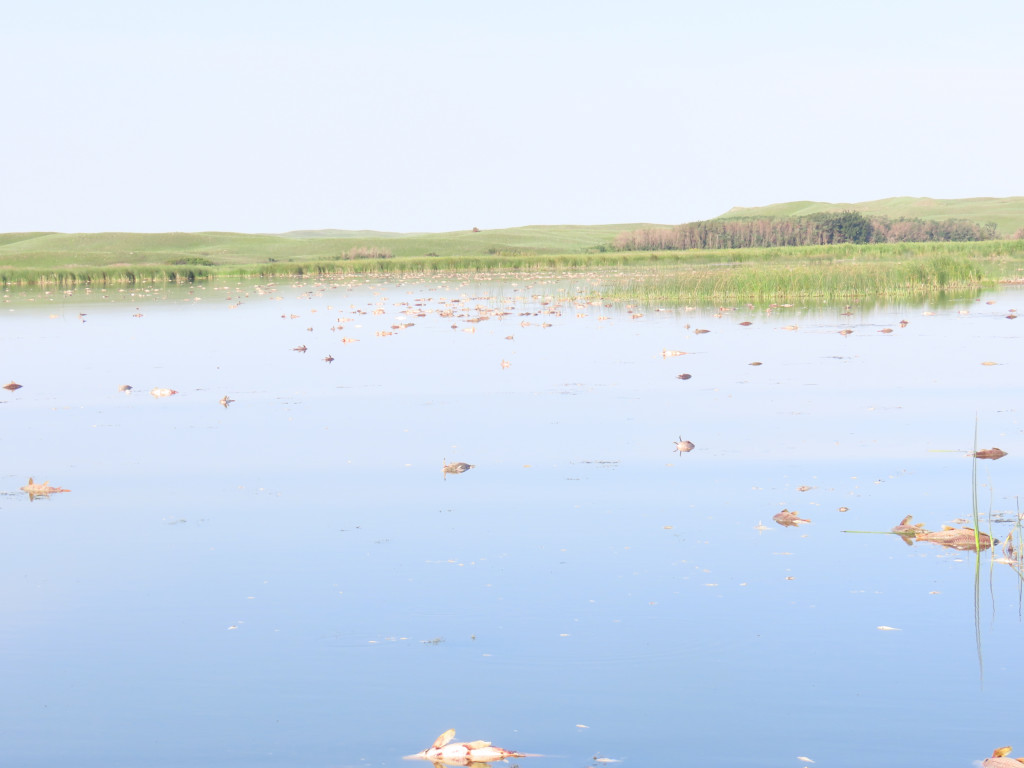
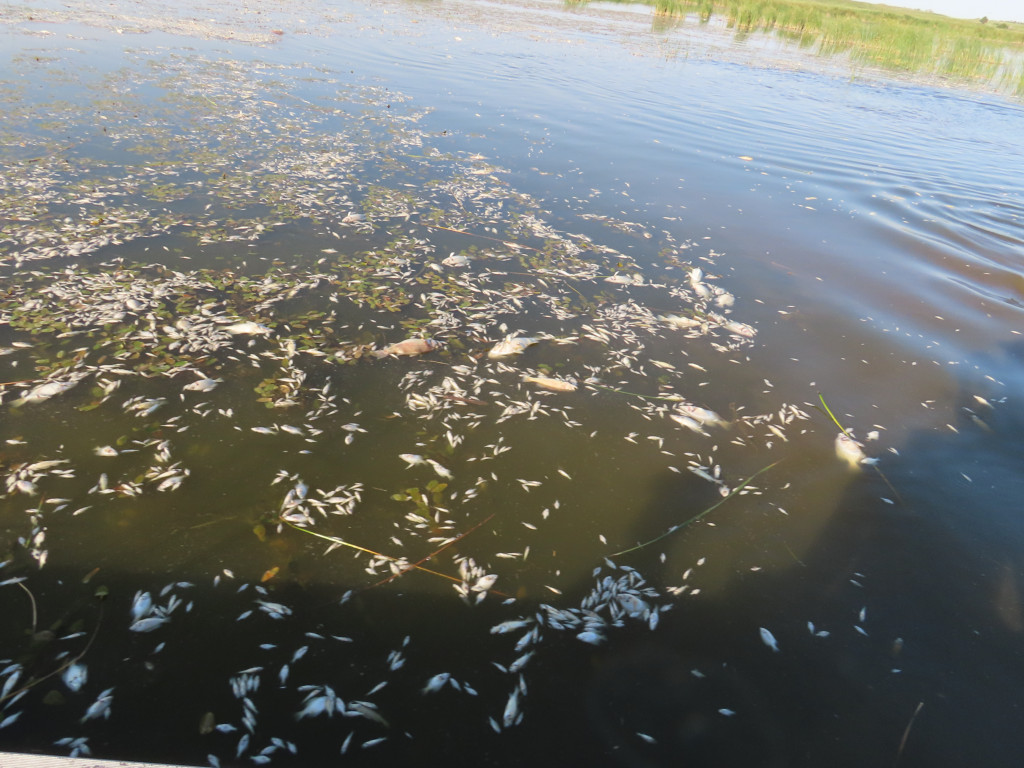
This clip of a little airboat ride will give you some additional perspective:
Previous rotenone renovations on sandhill lakes have shown that the total biomass of all fish was dominated by common carp. I have no doubt this was the case at Hackberry as well.
Re-stocking will start soon, this fall. Water quality and habitat conditions improve immediately, as soon as the carp are removed. Yes, it will take some time for the fish to grow, but Hackberry is on its way back, better than ever! I cannot wait!
The post Hackberry Renovation appeared first on Nebraskaland Magazine.

